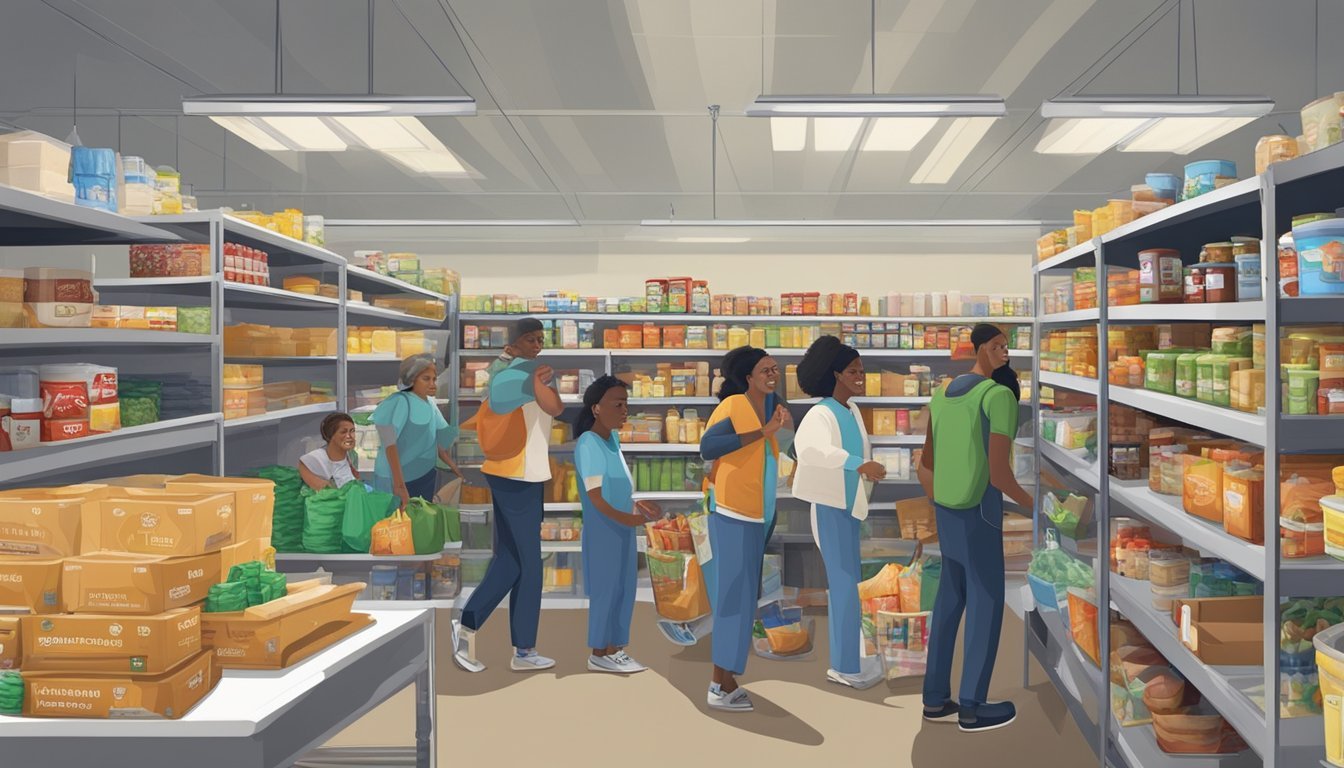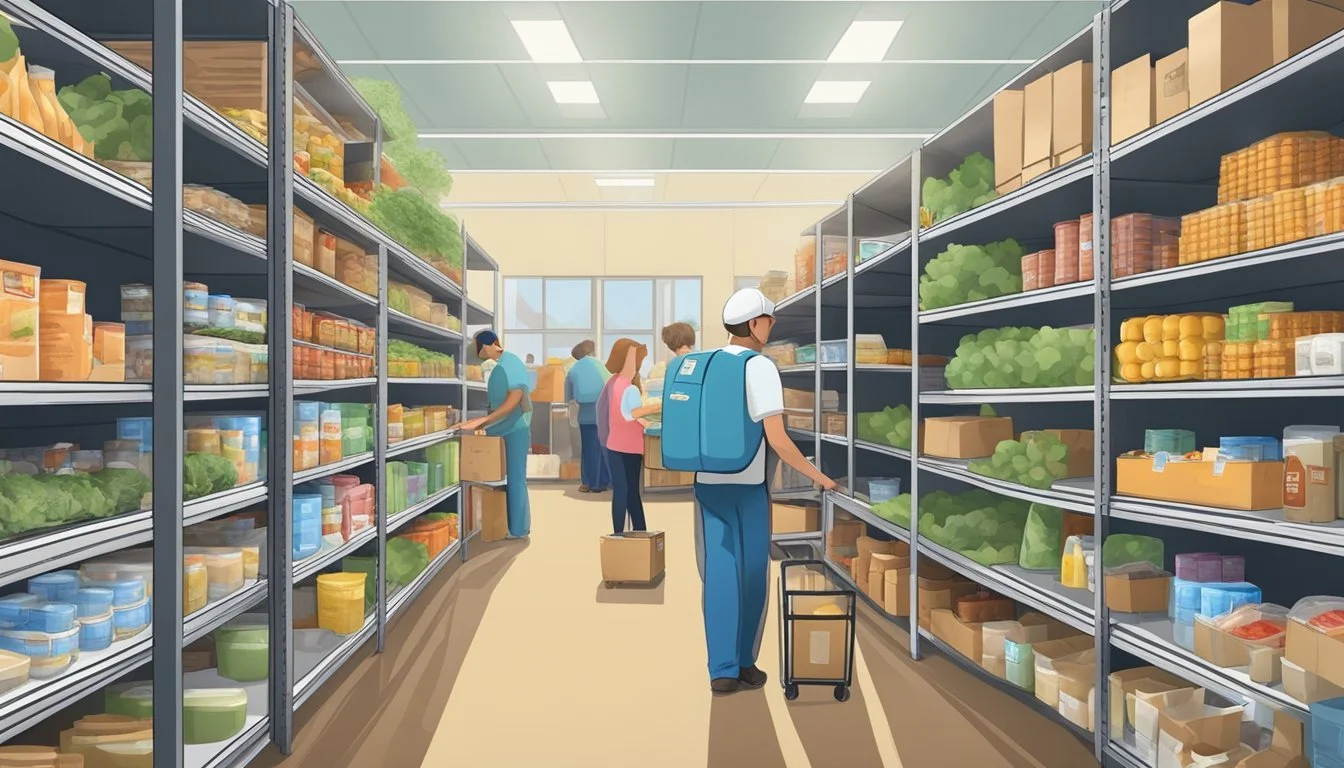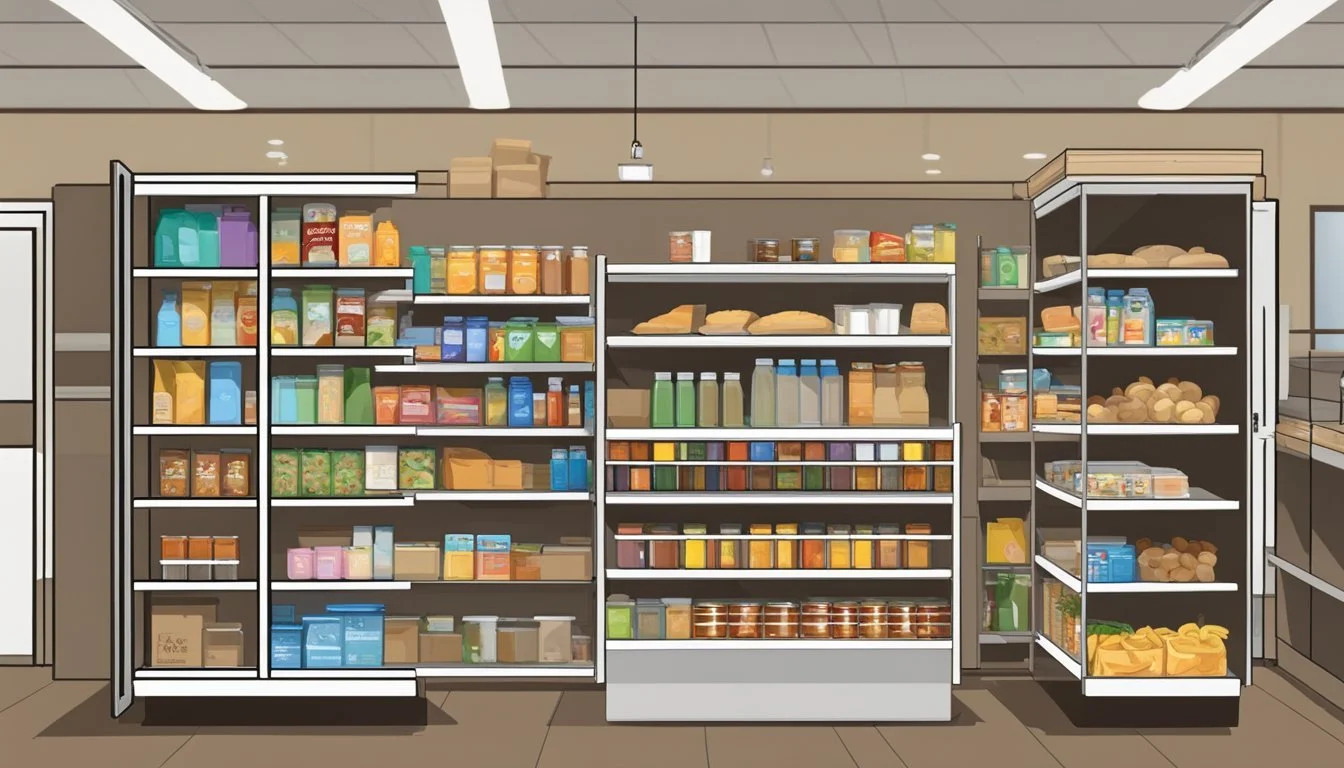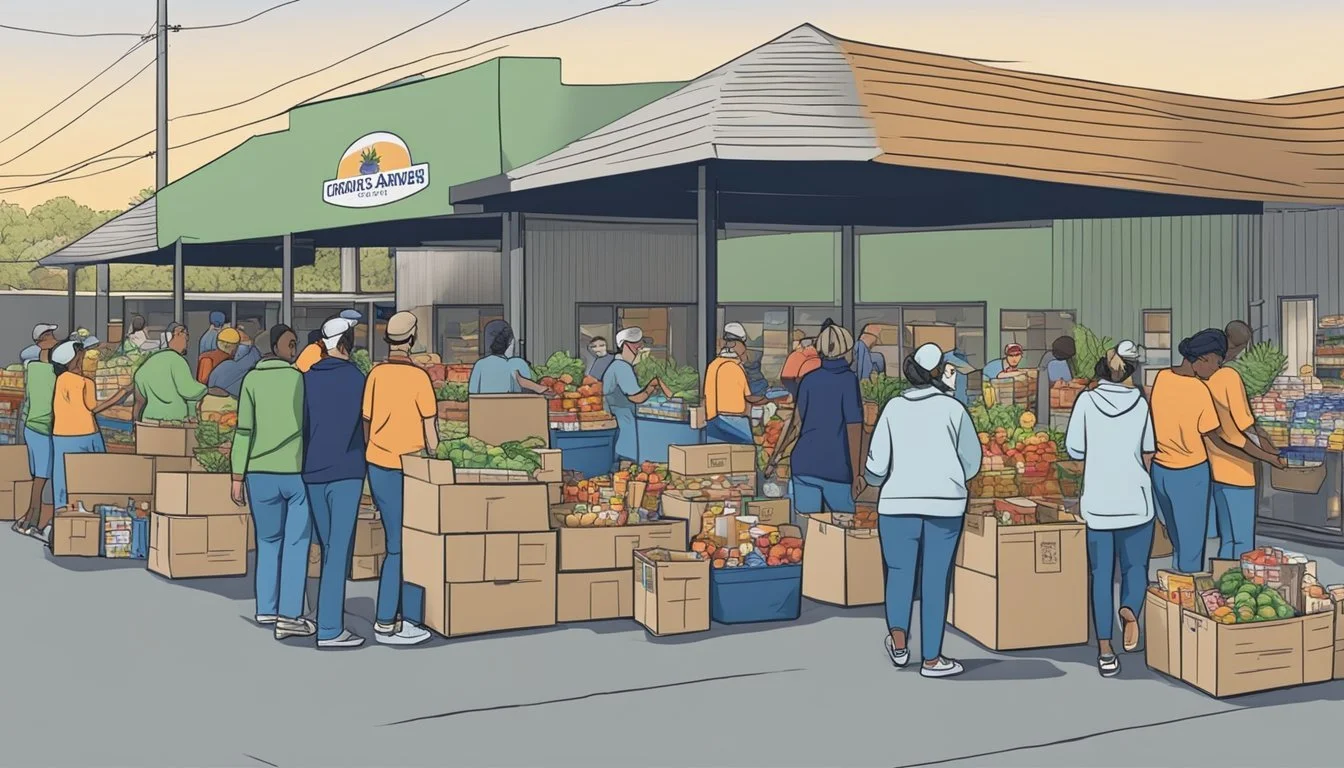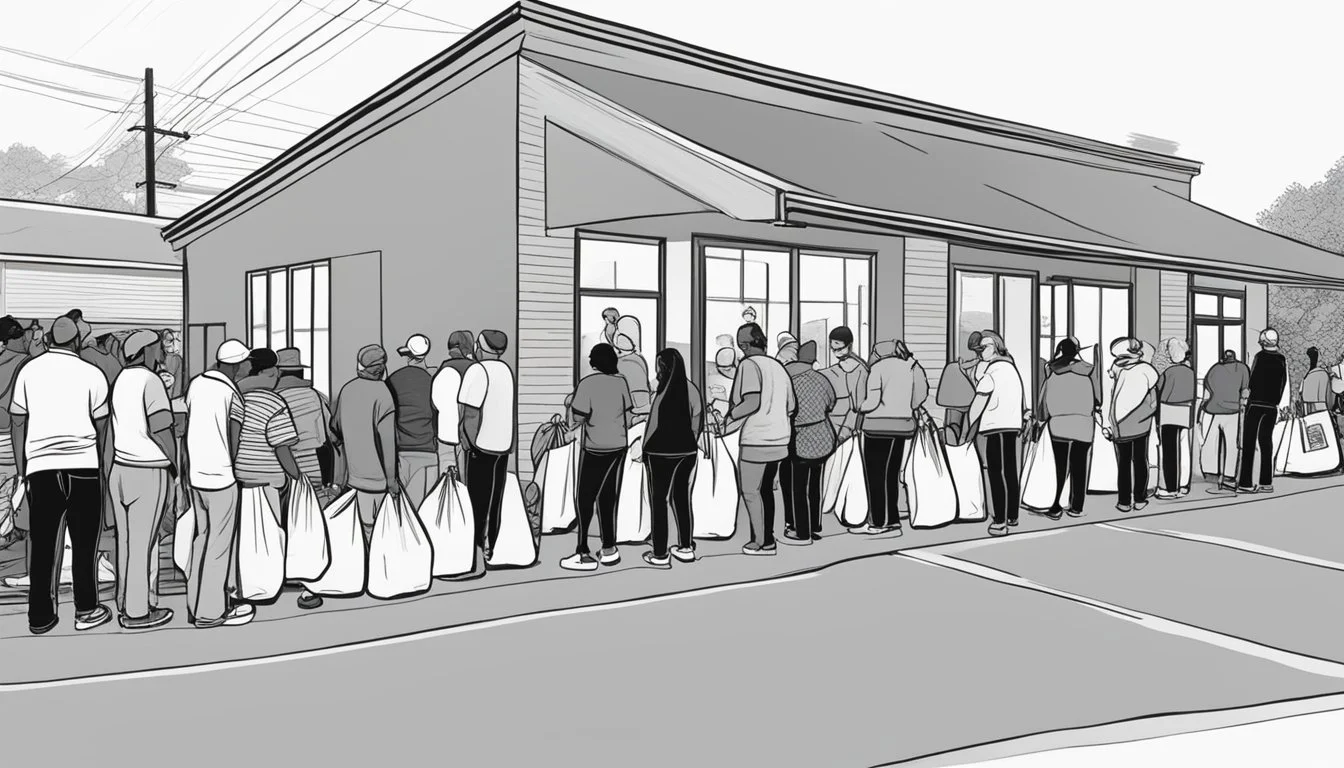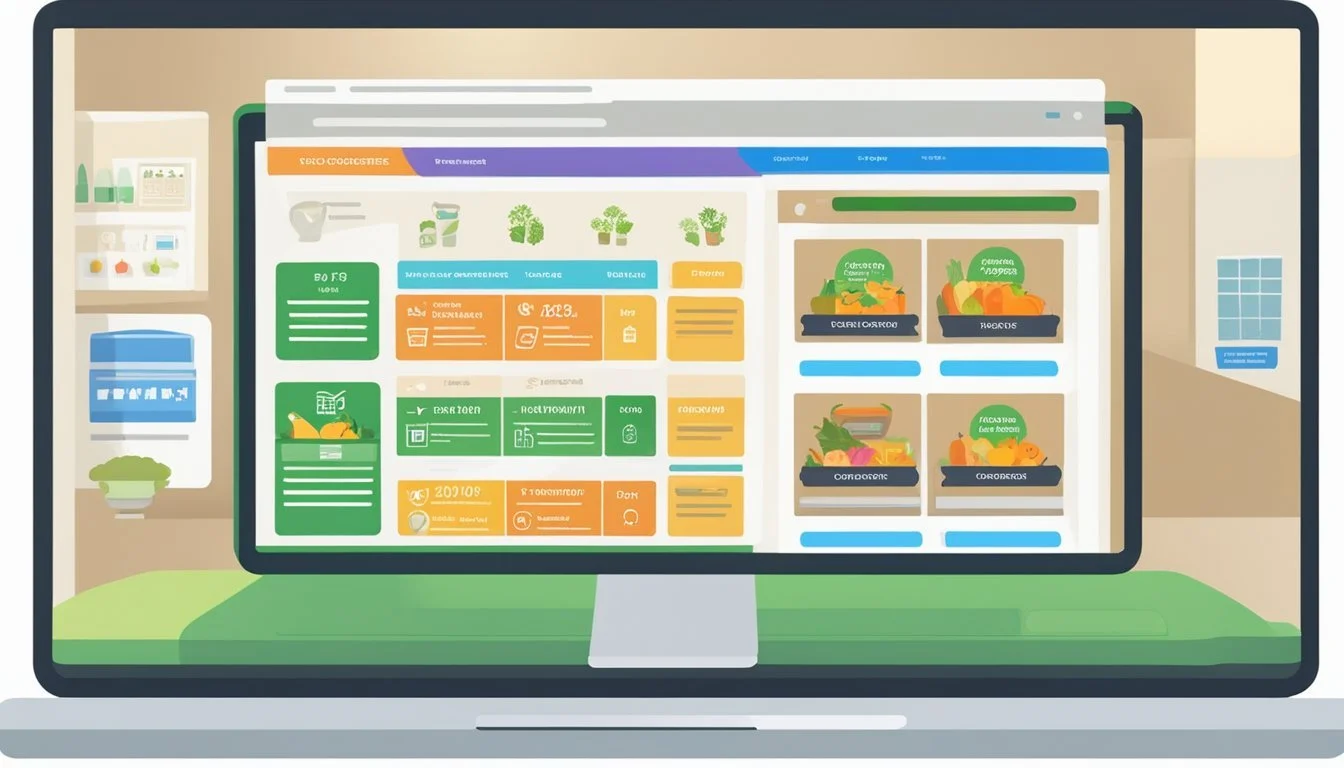Free Groceries and Food Pantries in Nacogdoches County, Texas
Your Guide to Local Assistance Programs
This Article is Part of Our Guide on Free Groceries in Texas
In Nacogdoches County, Texas, a community-driven approach to food insecurity has led to the establishment of several food pantries and free grocery programs. These initiatives are vital resources for residents facing financial hardships, providing supplemental food aid to diverse groups including seniors, children, people with disabilities, and veterans. Through the collective efforts of local non-profits, churches, and community volunteers, these programs aim to mitigate hunger and improve access to nutritious food for those in situational poverty or experiencing temporary crises.
At the heart of the county’s support network is the Nacogdoches HOPE Food Pantry, a longstanding institution since 1994. HOPE extends its services to those in need by allowing individuals and families to visit the pantry weekly, ensuring a continuous supply of food staples. Alongside, area listings such as Douglass Community Food Pantry offer additional support, albeit with fewer resources. The partnerships with retail food partners like local Walmart and Kroger stores, as well as Lufkin's HEB and Dollar General, signify the broader community's role in combating food scarcity.
These programs often broaden their impact through collaboration with entities like Sacred Heart Catholic Church and initiatives like Healthy Nacogdoches, which not only provide food but also engage the community in volunteer activities. Each food bank, including specialized ones like Azelway Pantry for children in foster care, form a patchwork of support, emphasizing the collaboration between various organizations committed to nourishing their community and strengthening the local safety net for those in need.
Understanding Food Insecurity in Nacogdoches County
Food insecurity is a pressing issue in Nacogdoches County, affecting a diverse range of residents, from children and senior citizens to veterans and individuals with disabilities. This challenge is characterized by a lack of consistent access to adequate food for a healthy life, often as a result of financial constraints.
Residents facing situational poverty—one unforeseen expense or emergency away from financial instability—can tip families into food insecurity. In such scenarios, local food pantries serve as a crucial resource. For instance, Nacogdoches HOPE Food Pantry has been providing supplemental food since 1994, allowing individuals and families to visit weekly.
Key Affected Populations in Nacogdoches County:
Children: Food access is vital for growth and development.
Senior Citizens: Often on fixed incomes, may struggle to afford groceries.
Veterans: Can face unique financial and health challenges.
Individuals with Disabilities: May encounter additional barriers in obtaining food.
Local Initiatives:
Organization Service Provided Contact Information Nacogdoches HOPE Weekly supplemental food Not listed Azelway Pantry Food assistance by appointment (936) 205-5641
Nacogdoches County's response to this issue is underpinned by a network of community food banks and charitable organizations. Importantly, they also offer opportunities for residents to volunteer and donate, fostering communal efforts to combat food insecurity. Volunteers are instrumental in the distribution of groceries and operational support, ensuring that assistance is available to those in need.
What Are Food Pantries and How Do They Help?
Food pantries are vital resources in communities, dedicated to providing free food to individuals and families in need. They vary in operation; some are run by non-profit organizations, others by churches, and many rely heavily on donations and the efforts of volunteers. Their mission is clear: to offer immediate food assistance, focusing on distributing nutritious food to bolster the health and well-being of their communities.
In Nacogdoches County, food pantries such as the Hope Resource Center and Harvest House stand out as pillars of support. They effectively bridge the gap for many who find themselves in times of food scarcity. Another notable pantry, Azelway Pantry, joins these efforts, providing additional support within the county.
Hope Resource Center: Offers a variety of services including food assistance.
Harvest House: Operates with the help of community support to feed the hungry.
Azelway Pantry: A beacon of relief that augments the local food aid network.
The benefits of food pantries extend beyond mere sustenance:
Alleviate hunger
Improve nutrition
Enhance quality of life
Foster community support
These food pantries also contribute to community solidarity by uniting individuals under the common goal of helping neighbors. They serve as crucial touchpoints for those facing difficult times, ensuring that access to food is available to all who are in need within Nacogdoches County.
List of Food Pantries in Nacogdoches County
In Nacogdoches County, several food pantries provide groceries and food assistance to residents in need. Below is a curated list of food pantries in the area with relevant details.
Nacogdoches HOPE Food Pantry
Location: Nacogdoches, TX
Food Distribution: Monday & Thursday (9 am - 11:30 am), produce on Thursdays (12 pm - 1:30 pm), second and fourth Tuesdays (5 pm - 7 pm).North Street Church of Christ
Address: To be obtained via inquiry.
Contact: Information available upon direct contact.Landmark Baptist Church
Location: Garrison, TX
Services: Offers food assistance through community outreach programs.Sacred Heart Catholic Church
Location: Nacogdoches, TX
Food Distribution: Operates a food pantry; contact the church for current hours and services.Cushing
Details: Food pantry services are offered in the community, with locations and times subject to change.
Residents seeking assistance should reach out to these pantries directly or visit their websites for the most current information on food distribution schedules and availability. Each pantry aims to serve the community and may have specific criteria or varying hours of operation.
Operating Hours and Contact Information
Nacogdoches HOPE Food Pantry offers services at specific times during the week. The pantry is open on Monday and Thursday from 9 am to 11:30 am. Additionally, on the second and fourth Tuesday of the month, evening hours are available from 5 pm to 7 pm. For those in need of fresh produce, distribution occurs every Thursday from 12 pm to 1:30 pm, or until supplies run out. Individuals can request further information or assistance by calling (936) 559-1801.
Another resource in Nacogdoches is the Harvest House which has its own set of operating hours. This pantry is accessible on Tuesday from 10 am to 11:30 am, and then on Wednesday from 4 pm to 5:30 pm. Additionally, they designate Thursday as produce day, available from 11 am to 12:30 pm. Interested parties can gather more details by contacting Harvest House at (936) 564-2471 or visiting their website for comprehensive information.
Here is the summarized schedule and contact information for these food assistance services:
Facility Days Hours Phone Number Nacogdoches HOPE Food Pantry Mon & Thu 9 am - 11:30 am (936) 559-1801 2nd & 4th Tue 5 pm - 7 pm Thu (Produce) 12 pm - 1:30 pm Harvest House Tue 10 am - 11:30 am (936) 564-2471 Wed 4 pm - 5:30 pm Thu (Produce) 11 am - 12:30 pm
Note that it's advisable to check in with the facilities directly for any updates to their hours or services.
Qualification Criteria for Receiving Aid
Food assistance programs in Nacogdoches County are designed to ensure that individuals and families facing food insecurity have access to nutritious food. Eligibility often depends on income criteria and some programs prioritize special groups such as senior citizens and veterans.
Income Guidelines
Eligibility for food assistance programs in Nacogdoches County is often determined by household income levels. The specific income thresholds can vary depending on the program in question. A common metric used is the percentage of the federal poverty income guidelines, which is a widely accepted poverty measure in the United States.
The Emergency Food Assistance Program (TEFAP): Households must meet state-specific eligibility criteria, which commonly involve having an income at or below a certain percentage of the federal poverty income guidelines.
Special Groups
Certain populations are given special consideration when it comes to qualifying for food assistance, recognizing their particular needs and vulnerabilities.
Senior Citizens: Programs like the Senior Farmers' Market Nutrition Program (SFMNP) and the Commodity Supplemental Food Program (CSFP) cater to individuals aged 60 or older, with income guidelines set at or below 185% of the federal poverty income guidelines.
Veterans: Veterans are another group that might receive specific attention through food assistance initiatives, and they can qualify for aid through general income-based criteria or through veteran-specific outreach programs.
It should be noted that details regarding income levels and guidelines can be obtained by contacting local assistance organizations directly. Each assistance program may have distinct qualification processes, requiring the applicants to meet specific criteria.
How to Volunteer and Make Donations
Volunteering at Local Food Pantries Individuals who are eager to volunteer can find opportunities in Nacogdoches County by connecting with local food banks such as the Nacogdoches HOPE Food Pantry. Prospective volunteers are encouraged to bring their unique talents and enthusiasm to support the mission of fighting hunger. One can start by visiting the respective food bank websites to sign up for available volunteer shifts.
Donating to Food Pantries Donations are crucial for food banks to sustain their operations. Monetary contributions can be made online through the food pantry's official website. For example, the Nacogdoches HOPE Food Pantry accepts donations via their "DONATE NOW" feature. Physical donations of non-perishable food items can typically be dropped off at designated locations during specific hours.
Ways to Contribute How to Proceed Volunteer Time Check website for volunteer shifts and requirements. Monetary Donations Use online donation options or mail a check to the food bank. Food Donations Bring non-perishable items to the pantry during accepted hours.
Food banks often rely on the support of volunteers, and some may be an all-volunteer agency, which means they particularly benefit from the generous time offered by community members. Volunteers play a variety of roles from sorting and packing, to distributing food directly to those in need.
For individuals who wish to assist as volunteers or make donations, reaching out directly to the food bank for specific guidance and policies ensures the process meets the needs of the agency and the community it serves.
Food Banks and Their Extensive Support Network
Food banks in Nacogdoches County, Texas, operate as part of a broad support network that ensures individuals and families faced with food insecurity can access necessary provisions. The East Texas Food Bank is a significant player in this network, providing a lifeline to those in need through various food assistance programs.
Feeding America, the nation's largest domestic hunger-relief organization, is instrumental in this effort. It helps to distribute food through a network of over 200 member food banks, including the East Texas Food Bank. These food banks collaborate with partner agencies, such as local soup kitchens, food pantries, and other community-based organizations, amplifying their reach.
Partner agencies receive food from the food bank and directly serve individuals within their community. This symbiotic relationship ensures a more efficient distribution of resources and that assistance is more accessible to individuals.
Moreover, food banks like the East Texas Food Bank work closely with retail food partners. These partnerships allow for the sourcing of a variety of food items, ranging from fresh produce to non-perishable goods. Retail partners donate excess stock to food banks, which then becomes part of the food distributed through the network.
Below is a summary of how food banks and their associated networks operate:
East Texas Food Bank: Sources and distributes food to partner agencies.
Feeding America: Provides a nationwide framework for food banks.
Partner Agencies: Serve as the direct point of contact for food distribution.
Retail Food Partners: Supply food to banks through donations.
This well-orchestrated network ensures that those facing hardship in Nacogdoches County receive the help they need, reaffirming their invaluable community role.
Programs Specific to Nacogdoches Area
The food assistance landscape in Nacogdoches County, Texas, features several unique programs catering to the diverse needs of its residents, including seniors, families, and individuals facing food insecurity.
Senior Box Program
The Senior Box Program operates with federal funds and the oversight of the East Texas Food Bank (ETFB), aiming to provide a free box of nutritionally balanced food monthly to eligible seniors. Despite being federally funded, the contribution of volunteers is vital for maintaining its services to approximately 240 seniors in Nacogdoches County each month.
Client-Choice Distribution Model
Under the Client-Choice Distribution Model, families and individuals can select groceries akin to shopping at a supermarket, which not only preserves dignity but also reduces food waste. The Nacogdoches HOPE Food Pantry adopts this model, allowing patrons to visit the pantry weekly and choose items based on their dietary needs and preferences.
Retail Food Program
The Retail Food Program is an innovative approach where partnerships with local retailers are formed to distribute food that is near the sell-by date but still safe and nutritious. These collaborations essentially extend the food's life cycle while making sure that people in need have access to various food options.
Produce Distribution Program
Finally, the Produce Distribution Program places an emphasis on fresh produce distribution, addressing the need for healthy and fresh food options among the underserved populations. Special days, like the Thursday "produce day" at Harvest House, showcase the commitment to ensuring that fresh fruits and vegetables are accessible to the Nacogdoches community.
Support Services Beyond Food Assistance
In addition to providing essential food aid, Nacogdoches County offers a variety of support services aimed at nurturing overall well-being and economic stability for its residents.
Nutritional Information and Wellness
The HOPE Resource Center delivers not just food assistance but also vital nutritional information, ensuring that individuals and families receive education on healthy eating habits. They provide details on how to prepare balanced meals, manage special diets for health conditions, and maintain general wellness through proper nutrition.
Benefits Assistance and Referrals
Residents can receive guidance on how to navigate and apply for various benefits assistance programs such as the Supplemental Nutrition Assistance Program (SNAP). The county's referral system connects people to the relevant agencies responsible for these federal programs, offering a streamlined process for individuals to secure the aid they need.
Computer Stations for Job and Resource Search
Computer stations are available for community members, which serve as critical portals for job searching, accessing online resources, and enhancing digital literacy. At these stations, residents can conduct job searches, build resumes, and apply for assistance programs, empowering them to improve their economic situation.
Community Initiatives and Events
Nacogdoches County boasts a compassionate community response to food insecurity through various programs and events. Among the leading initiatives is the work done by Nacogdoches HOPE Food Pantry. They offer a range of services, including:
Weekly Food Distribution: Residents in need can visit HOPE once a week to receive supplemental food, supporting a diverse group including senior citizens, individuals with disabilities, veterans, and those experiencing situational poverty.
Produce Distribution Program: In collaboration with East Texas Food Bank, Nacogdoches HOPE conducts weekly distributions of fresh fruits and vegetables. These events take place every Thursday at noon and operate on a drive-through basis to facilitate ease of access.
Nacogdoches HOPE also recently expanded its services by opening a new resource center, further illustrating the community's commitment to supporting its residents.
Event Calendar:
Day Event Time Notes Thursday Produce Distribution 12:00pm Fresh fruits and vegetables, drive-through pickup
Residents are encouraged to participate in these events not only to receive aid but also to contribute to the community's collective effort to combat hunger. These initiatives underline Nacogdoches County's dedication to fostering a supportive and sustainable environment for all its residents.
Measures to Reduce Food Waste and Support Local Agriculture
Efforts in Nacogdoches County aim to improve food distribution to those in need while also bolstering local farmers' ability to provide fresh, nutritious options.
Food Waste Reduction Strategies
In Nacogdoches County, strategic initiatives are implemented to tackle food waste head-on. Partnerships with food pantries are key, as they redirect perishable items, like fresh fruits and vegetables, that are close to their sell-by date but still perfectly edible. Food rescue efforts often involve:
Collaborating with grocery stores: Redirecting surplus produce to food pantries.
Gleaning: Collecting unsold items from farmers’ markets.
Education: Informing the public on how to reduce food waste through proper storage and consumption of fresh produce.
Through these tactics, food that would otherwise go to waste is being salvaged, thus increasing the supply of free fresh fruits and vegetables for the community.
Engagement With Local Farmers
Local farmers are essential in Nacogdoches County’s sustainable food ecosystem. They are engaged through:
Produce distribution agreements: Local food pantries get free fresh fruits and vegetables directly from farms, assuring a steady supply of wholesome foods.
Farm to pantry programs: These programs create a channel for local farms to distribute excess produce, thus fostering a mutually beneficial relationship.
This engagement not only helps reduce food waste at the agricultural source but also supports the county's economy and provides residents with fresh, locally grown produce.
Soup Kitchens Versus Food Pantries
In Nacogdoches County, Texas, individuals facing food insecurity have access to various resources, including soup kitchens and food pantries. Understanding the distinction between these two services is crucial for those seeking assistance.
Soup kitchens primarily offer prepared meals to the hungry, often with no eligibility requirements. They are a place to nourish not only the body but also the soul through communal meals. Soup kitchens often serve as gathering places where everyone is welcome and can enjoy a hot meal in a social setting.
Soup Kitchens Food Pantries Serve hot meals Provide groceries Immediate consumption For home preparation No cost to individuals Various eligibility rules Walk-in friendly May require registration Community dining Support longer-term needs
On the other hand, food pantries distribute groceries to individuals and families who can take the items home to prepare. Often operating on a scheduled basis or by appointment, food pantries may require proof of need or residency. The aim is to support individuals over a longer period, helping stretch tight budgets and ensure food security.
It's important to note that while soup kitchens address the immediacy of hunger, food pantries play a role in sustained support. Both types of programs may exist within community structures like churches, community centers, or through standalone organizations. They rely on the support of volunteers and donations to provide services to those in need.
Tips for First-Time Food Pantry Clients
When an individual decides to visit a food pantry for the first time in Nacogdoches County, Texas, they can take several steps to ensure the visit is as efficient and stress-free as possible.
Before Arriving:
Research: Locate nearby food pantries and check if they require an appointment. Some may offer walk-in hours, while others might operate on a schedule.
Documentation: Clients should find out what documentation, if any, is needed to receive services. This may include identification or proof of residence.
At the Pantry:
Line Etiquette: If the food pantry operates on a first-come, first-served basis, clients should be prepared for a possible wait in line. Arriving early can help minimize wait times.
Curbside Pick-Up: If the pantry offers a drive-thru option, clients can stay in their cars while pantry volunteers load the groceries.
Visit Tips Details Check for Required Documentation ID, proof of residence, etc. Understand the Distribution Process First-come, first-served or by appointment Prepare for the Experience Dress for the weather; bring bags or boxes
During Selection:
Choosing Food: Many pantries provide a list from which clients can select groceries. This list typically includes a variety of food items that clients can choose based on their household's needs.
Remember that food pantries are designed to help individuals and families in need, and the staff and volunteers are there to assist. Clients should not hesitate to ask questions or seek help if they are unsure about the process.
How to Find Food Assistance Using Online Resources
Residents of Nacogdoches County looking for food assistance have several online tools at their disposal. A primary resource is Feeding America's online search tool, which aids in locating nearby food banks and food pantries. Users simply enter their zip code to find a list of available services in their area.
Findhelp.org, another valuable online platform, operates similarly and provides a searchable database of social services—not just food assistance but also aid across various categories. Upon entering their location, individuals are directed to a plethora of local resources, including free groceries and food pantries.
For those in need of immediate assistance, United Way 211 serves as a vital connection. It’s a comprehensive source of localized information, accessible via:
Phone: Dial 211
Online: Visit their website
The USDA National Hunger Hotline is also an option, with contact information as follows:
Phone: 1-866-348-6479 (English) or 1-877-842-6273 (Spanish)
Hours: Monday through Friday, 7:00 AM to 10:00 PM Eastern Time.
By leveraging these resources, individuals can acquire information on how to apply for various food assistance programs like SNAP, WIC, or locate emergency food services. These platforms are designed to offer clear, straightforward information to guide individuals toward food security in a dignified and accessible manner.

